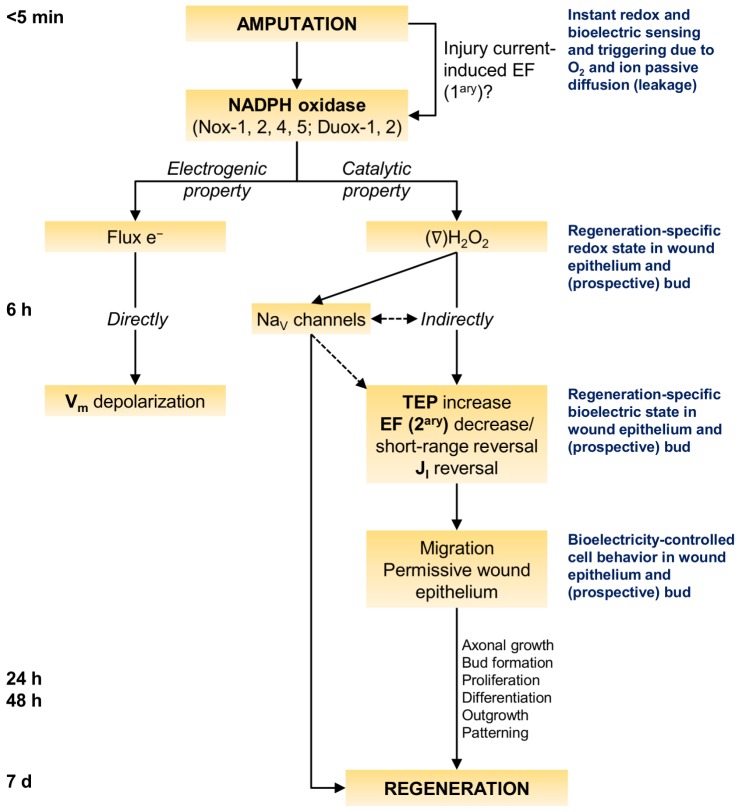Fig. 7.
Stepwise model of redox and bioelectric integration during regeneration. NADPH oxidase-mediated electron flow and H2O2 production independently regulate different bioelectric activities. This dual property – electrogenic and catalytic – of NADPH oxidases explicitly represents the proposed two-way regulation hypothesis. The focus is on the early timing of 6 hpa, when the hallmark H2O2-switched current reversal occurs in regenerative tadpoles. A redox-bioelectric feedback module may be present, where bioelectric signals (instant primary EF) might activate redox signals (NADPH oxidases and generated H2O2), which in turn regulate bioelectricity (Vm, TEP, secondary EF and JI) to modulate regeneration. Bioelectrically controlled cell migration and subsequent permissive wound epithelium is suggested as a mechanism by which, ultimately, H2O2 may control regeneration. e−, electrons; ∇, gradient.

